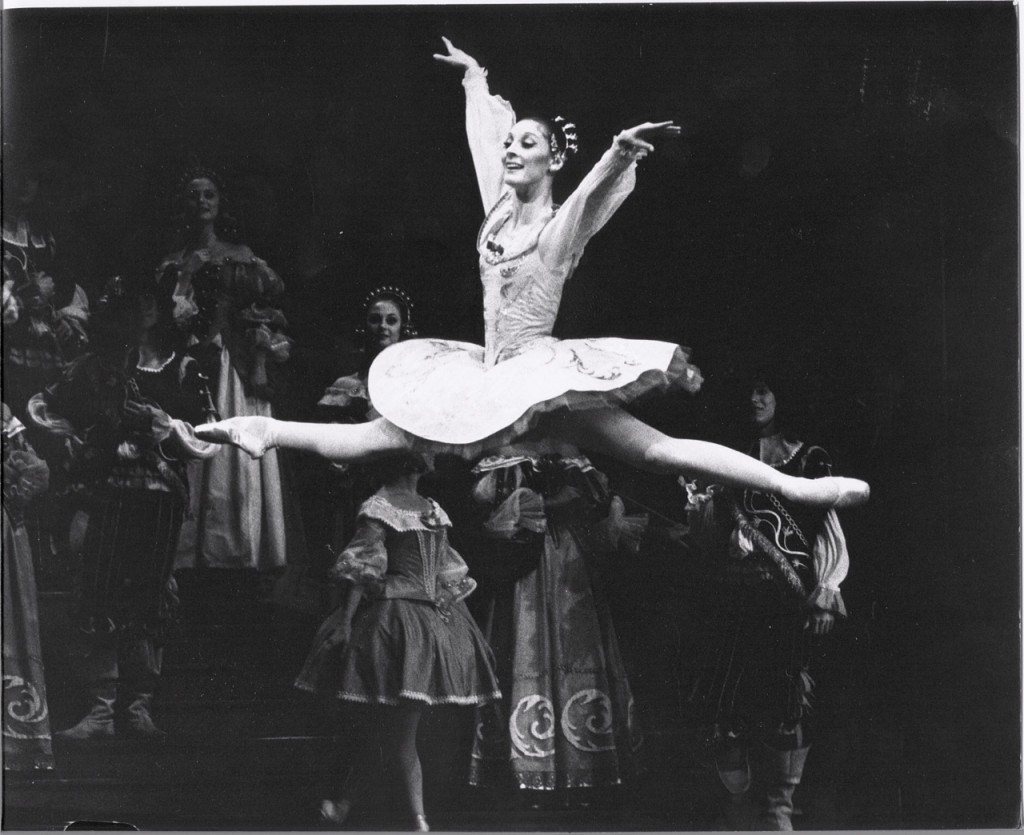
by Risa Gary Kaplowitz
Although it’s been nearly four decades, I remember like it was yesterday–standing in line with my friends at Lincoln Center by 7:30 AM to get standing room tickets to see Cynthia Gregory dance. She was an American Ballet Theatre superstar at the time, and no matter what she performed (but especially when partnered by Fernando Bujones), we were ravenous to dwell with her in the magical world she created onstage.
Ms. Gregory’s assured technique, especially her balances were legendary. Solid like a statue with a beating heart, she would take an attitude line en pointe and hold, hold, hold it as we held, held, held our breath only to exhale when an ever so slow extension into arabesque was complete. Then we exploded into rock-concert-fan-screams; a cacophony of bravas and oh-my-gawds.
Yet, as wonderful as these heart-stopping moments were, they never came at the expense of Ms. Gregory’s characterizations and musicality. Rather, she used her technique as a means by which to express whatever character she was portraying. She was a true ballet artist of the narrative ballets.
Unfortunately, in these days of what appear to be an Olympian approach to ballet, such ballet artists are hard to find. And sadly, many ballet schools and major companies do not seem to be doing enough to preserve ballet’s greatest asset—its ability to transcend words and transport an audience into their world. Ballet technique that explodes with meaning instead of fireworks is vastly lacking.
This is due in part to the thriving dance competition scene—one of the most prestigious is Youth America Grand Prix, which was featured in the recent movie First Position—and, more broadly, to the human nature of always wanting more. Many of today’s ballet students believe that the main goal of their training is to achieve higher extensions, bigger jumps, and more turns. As they obsessively view ballet wunderkinds on YouTube, ballet companies respond to the demand for ballet pyrotechnics by promoting hyper-technical dancers without much coaching on the subtleties necessary to make great art.
Thanks to YouTube, we can take a closer look into this dilemma. Below is a video of Ms. Gregory performing the Rose Adagio from The Sleeping Beauty in the late 1970’s. In it, she illustrates a ballerina artist who uses impeccable technique to provide a deep connection to her character, the sixteen year-old Princess Aurora. In the scene, Aurora is meeting her suitors for the first time.
Ms. Gregory’s portrayal clearly shows Aurora’s growth in both comfort and joy as she gains confidence dancing with her suitors. Ms. Gregory’s pitch perfect technique is in perfect harmony with the story and the music. Her nuanced gestures grow larger as Aurora’s confidence does. And, at the end, there is that arabesque extension— slow, controlled and deliberate. An enraptured ending to a demure beginning. [Read more…]




